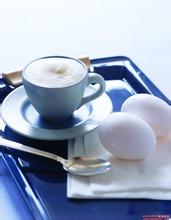Coffee bean mill coarse and fine taste grinding grade hand-made coffee powder thickness standard
Coffee bean mill coarse and fine taste grinding grade hand-made coffee powder thickness standard
The ideal time to grind coffee is to grind it before cooking. Because ground coffee is easy to oxidize and lose its flavor, especially without proper storage, coffee powder is also easy to change flavor, so it is naturally impossible to cook mellow coffee.
Some people are afraid of trouble or do not want to buy more bean grinders, so they usually buy ready-made coffee powder when they drink coffee at home. At this time, they should pay special attention to the problem of storage. Because the climate in Taiwan is humid, it is best not to place coffee powder at room temperature at will. A more appropriate way is to put it in a sealed jar and refrigerate it in the refrigerator, and do not put it in the same place with garlic, fish and shrimp and other heavy-flavored food. Because the coffee powder is easy to absorb, a careless coffee becomes a strange taste coffee, then even the best quality coffee will be spoiled. However, some people put the cooked coffee powder in the refrigerator as a deodorant, which is a good way to make the best use of things.
When grinding beans, the size of the powder depends on the way it is cooked. Generally speaking, the shorter the cooking time, the finer the ground powder; the longer the cooking time, the thicker the ground powder. In terms of actual cooking, the ESPRESSO machine takes a very short time to make coffee, so the grinding is the finest, and the coffee powder is as fine as flour; it takes more than a minute to cook coffee by blocking the air, and the coffee powder is medium-sized grinding; American filter coffee takes a long time to make, so the coffee powder is the thickest, like Beijing grains on a shell beach. Grinding coffee powder with appropriate thickness is very important for making a good cup of coffee, because the extraction of water-soluble substances in coffee powder has its ideal time, if the powder is very fine and cooked for a long time, resulting in over-extraction, the coffee may be very bitter and lose its aroma. On the other hand, if the powder is coarse and cooked too fast, resulting in insufficient extraction, the coffee will be tasteless because it is too late to dissolve the water-soluble substance in the powder.
The grinding thickness of coffee beans will also affect the taste. Under the premise of consistent objective conditions, generally speaking, the more fine the grinding is, the more bitter the coffee will be, and relatively, it will cover up other rich flavors of coffee. The thicker the grinding, the more sour it will be. Too sour will make coffee difficult to taste, so when you want to show a unique flavor of coffee, you can also use micro-survey grinding to achieve the effect. But this adjustment should be a moderate fine-tuning on the basis of the corresponding grinding degree of the instrument.

Important Notice :
前街咖啡 FrontStreet Coffee has moved to new addredd:
FrontStreet Coffee Address: 315,Donghua East Road,GuangZhou
Tel:020 38364473
- Prev

How to control the relationship between extraction time and pressure of conscious espresso
How to control the relationship between extraction time and pressure of conscious espresso 1. Too rough grinding: if the flow rate is too fast, more than 60 milliliters of coffee will be extracted in less than 20 seconds; the concentrated color is light yellow, the texture is thin, and the oil is maintained for a short time; the taste is high acidity, simple taste and heavy water feeling. two。 Over-fine grinding: the flow rate is very slow, more than 30 seconds of extraction time, unable to extract 50 ml
- Next

Ratio of hand-brewed coffee to powdered water-characteristics of hand-brewed coffee
The proportion of hand-brewed coffee: the ratio of powder to water-the characteristics of hand-brewed coffee under the same beans, a good bean grinder is the most important link that affects the flavor, and a suitable scale is the most important factor to express the flavor of coffee. Therefore, if you want to express what kind of flavor, you should use the corresponding scale, hand-dripping coffee generally use medium-thick particles (such as gravel or thicker). Very
Related
- Beginners will see the "Coffee pull flower" guide!
- What is the difference between ice blog purified milk and ordinary milk coffee?
- Why is the Philippines the largest producer of crops in Liberia?
- For coffee extraction, should the fine powder be retained?
- How does extracted espresso fill pressed powder? How much strength does it take to press the powder?
- How to make jasmine cold extract coffee? Is the jasmine + latte good?
- Will this little toy really make the coffee taste better? How does Lily Drip affect coffee extraction?
- Will the action of slapping the filter cup also affect coffee extraction?
- What's the difference between powder-to-water ratio and powder-to-liquid ratio?
- What is the Ethiopian local species? What does it have to do with Heirloom native species?

